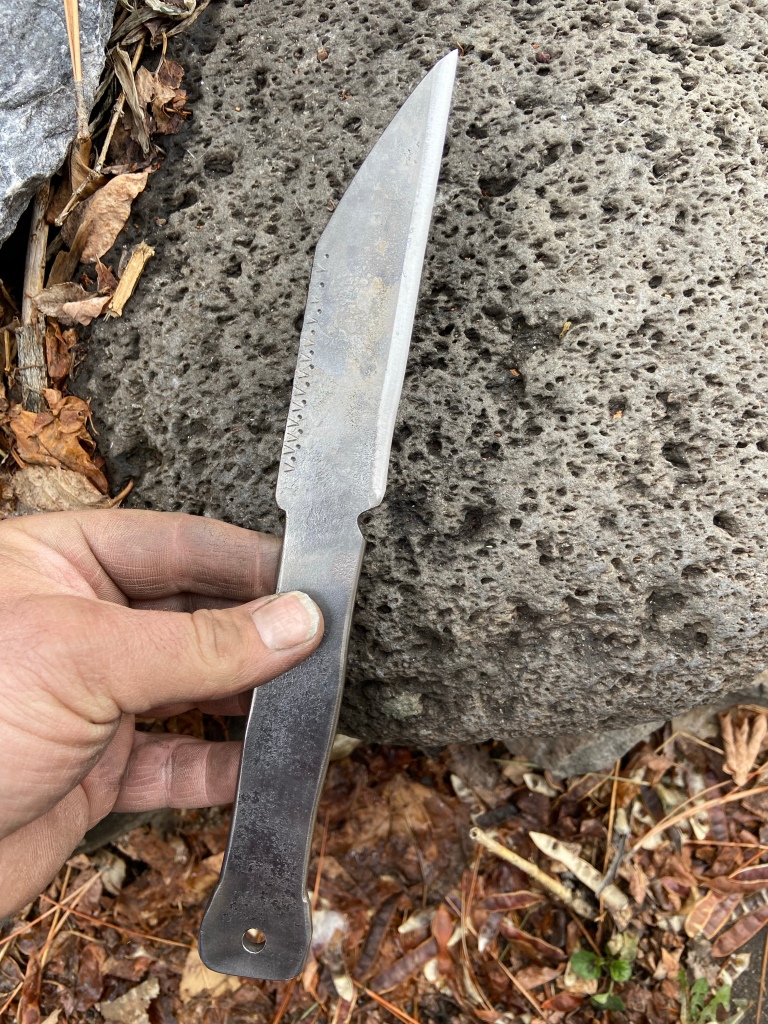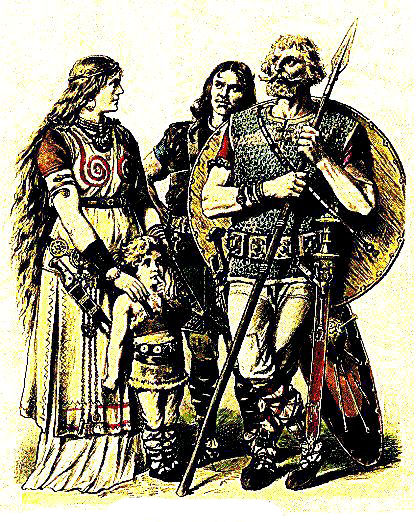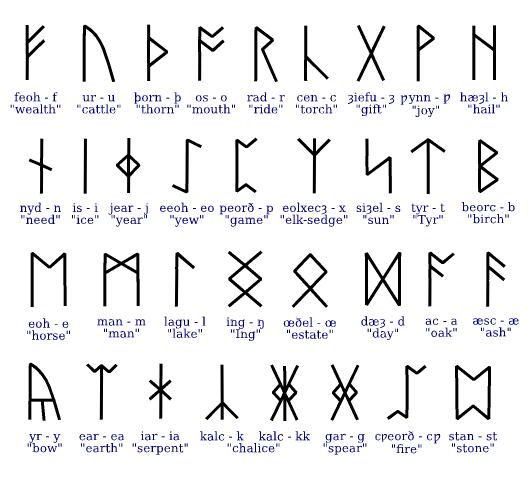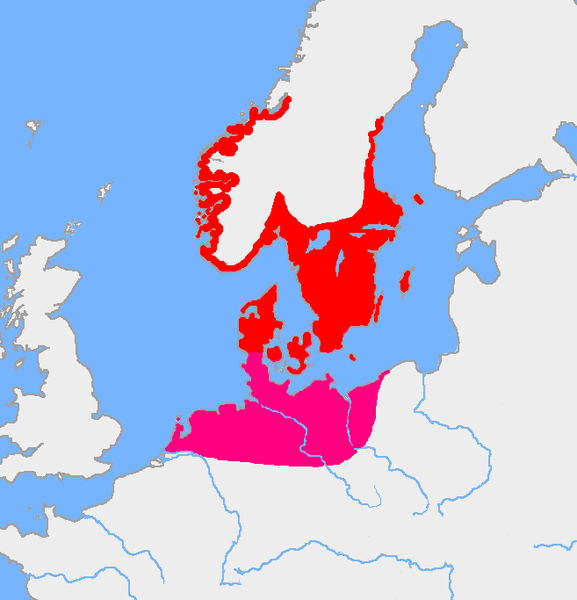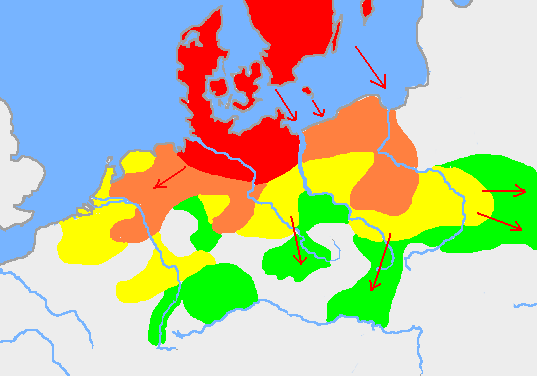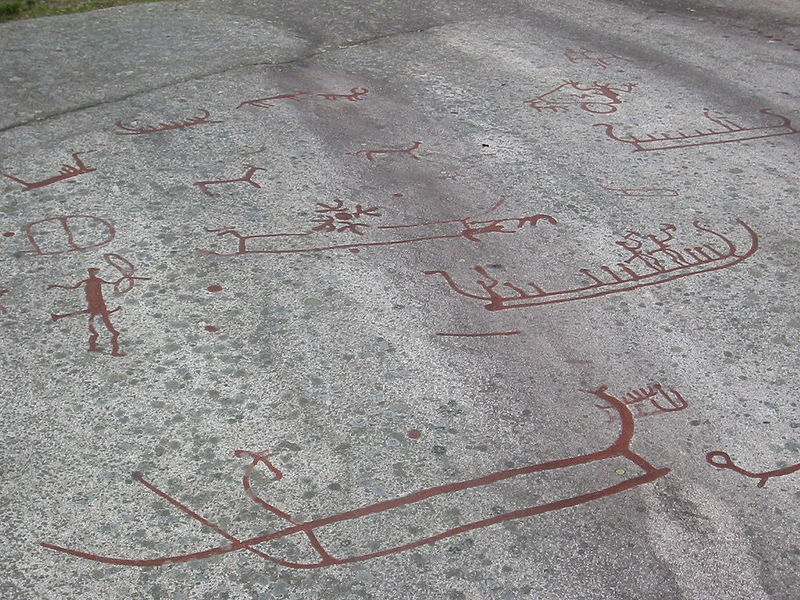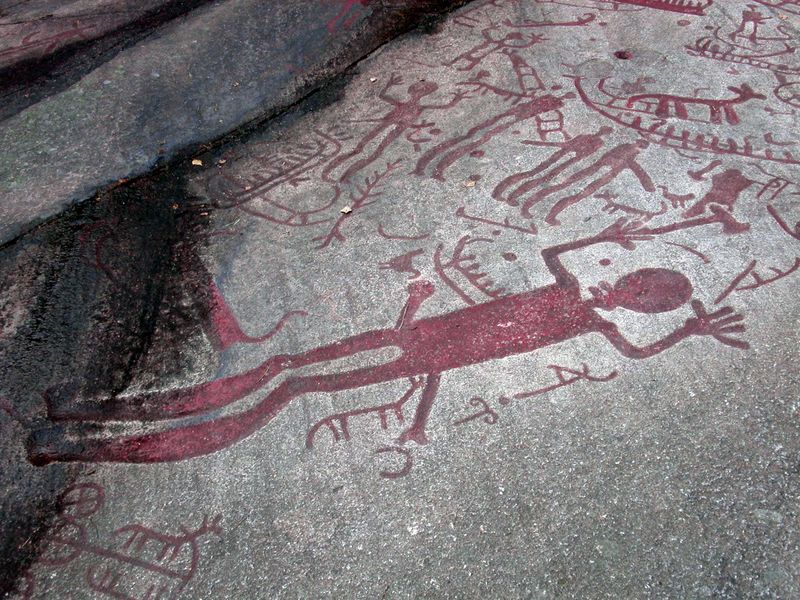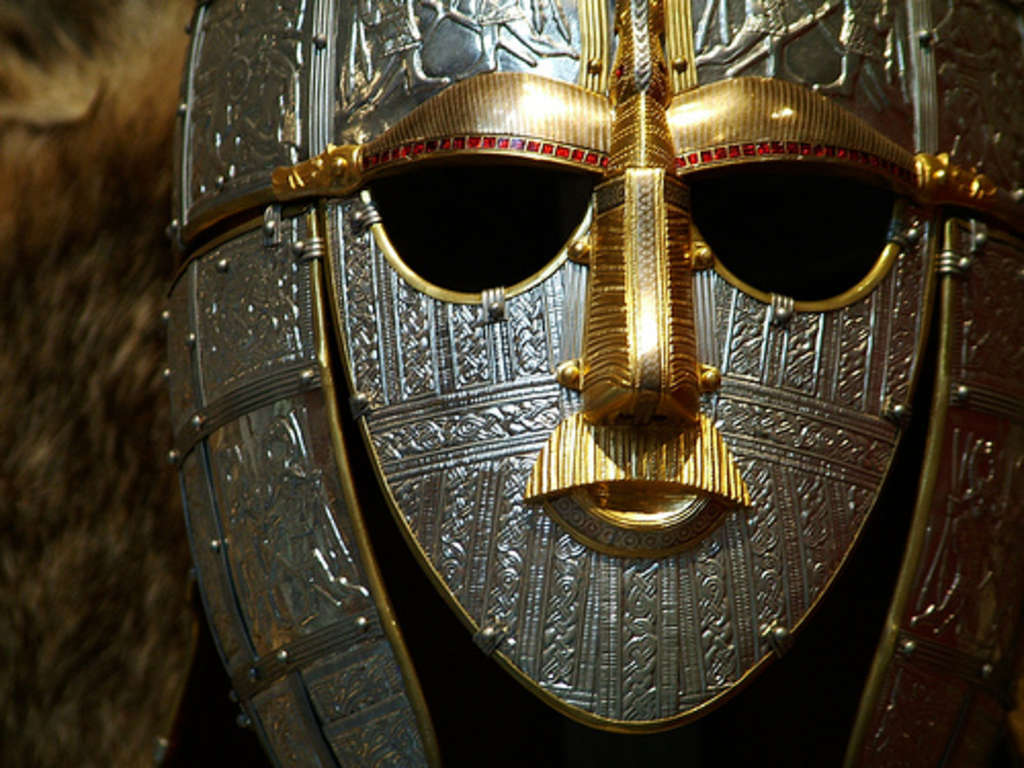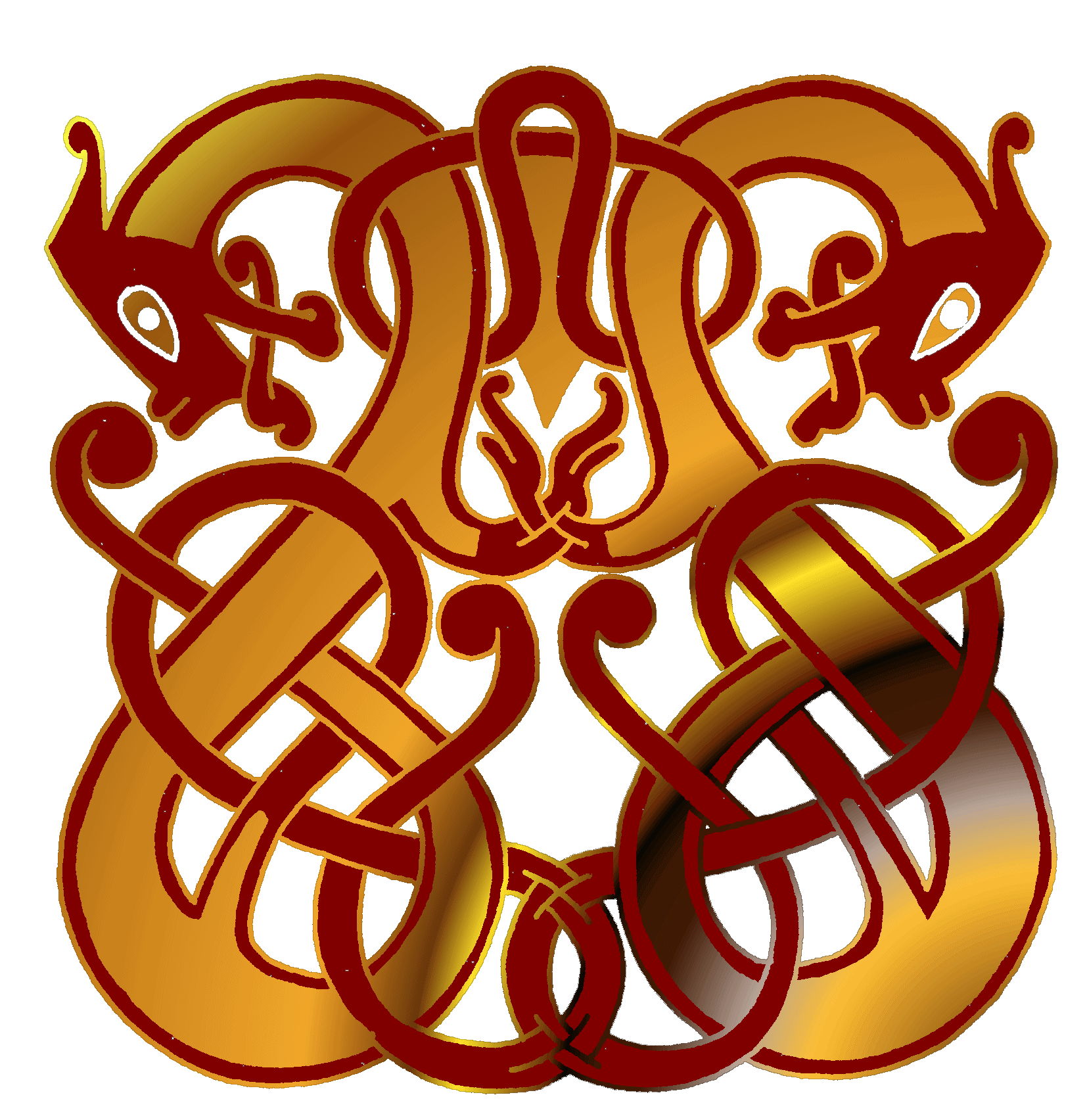Dithmarschen Mjönir
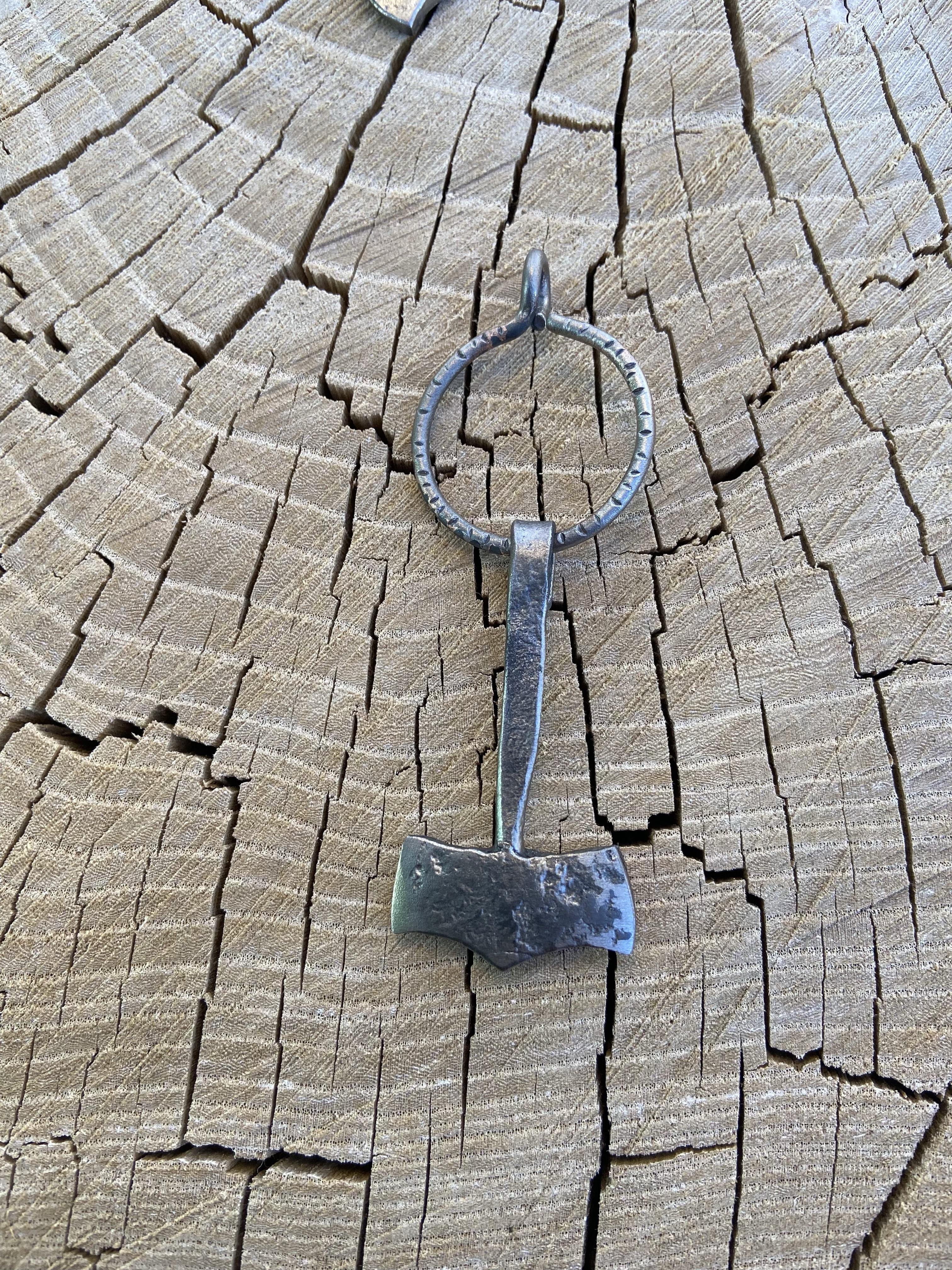



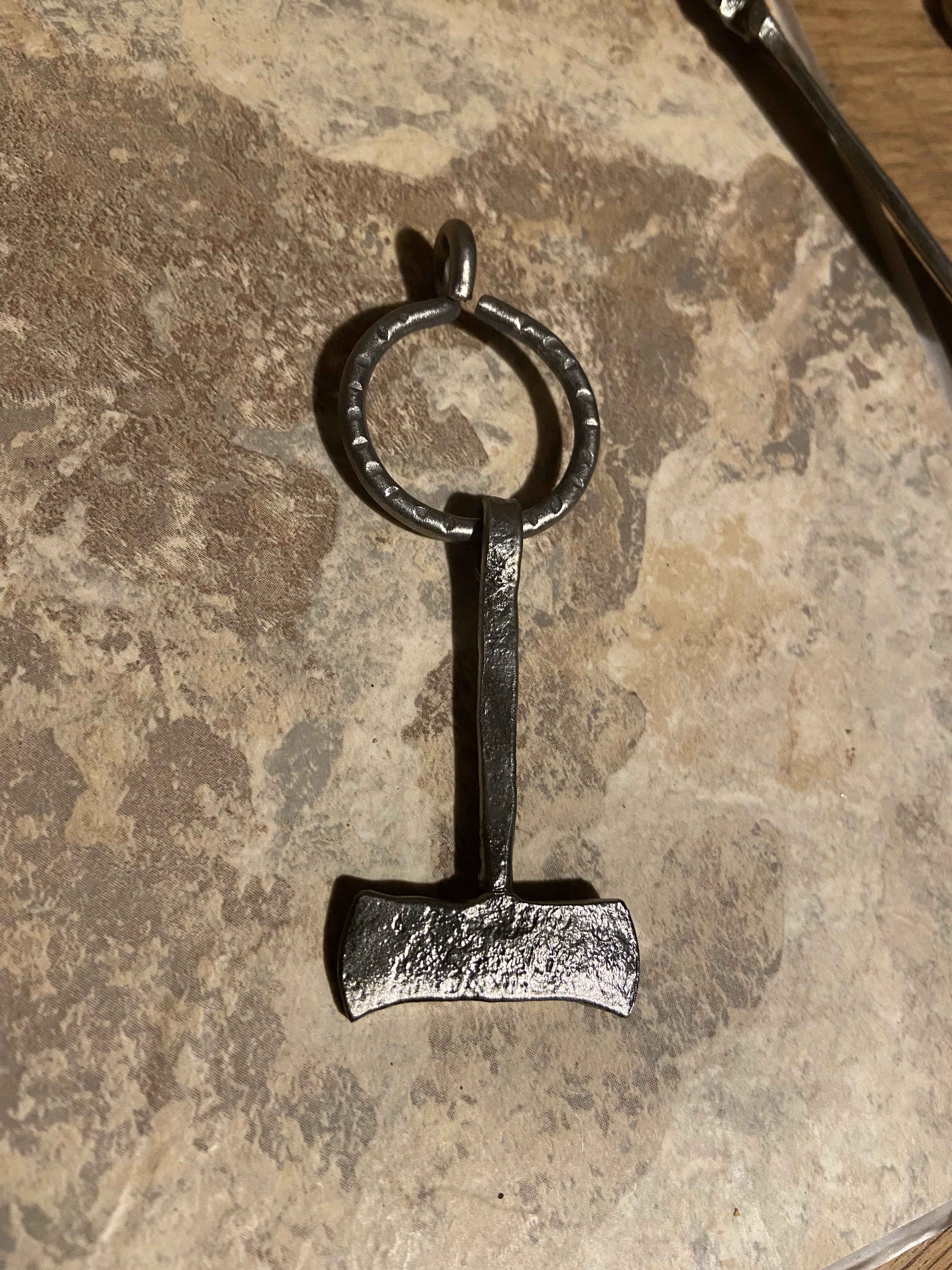
Hroð-
Etsy back up.
https://www.etsy.com/shop/NorseWest
After forever the forge is back in action. Trying to find a trip to Denmark/Germany. no customs just what is on here is available for now. Not back to knives yet. Hammer arm is a bit rusty yet.

Skål.
Hröð-
Jul

My Jul Will be between 12/21 and 1/18 so Glædelig Jul again & godt nytår.
Frohe Weihnachten und ein glückliches Neues Jahr.
Hröð-
Anglo Saxon grammar ideas
Anglo Saxon grammatical ideas and dative in semi poetic use:
The AS language retains the archaic Indo-European function of cases and gender as well as complicated poetic grammar that uses cases to imply words that are not actually written. In modern Germanic language only German and Icelandic retain cases and gender in any heavy use. Swedish and Danish have Common and Neuter in modern use. Danish and Old English share sometimes a visually close vocabulary but many are false friends and mean something different. AS uses cases not word order to indicate grammar and is more free in word order. This does not mean it is totally free or random in word order.
(The genders are meaningless in function in AS and only serve as a complicated archaic hold over from Proto Germanic and act as another layer of things to memorize. My interpretation from “Robert E Diamond” Old English grammar/ reader).
The following is my own writing of what I have learned.
The dative:
“Hail to the Sun”
The sun is receiving the call so it is singular dative.
I am the one hailing so I am in nominative.
Hælu Þære Sunnan (hail the sun) “to” is implied when using the dative and technically so is “the” so you could write it “Hælu Sunnan” and “ to the” ís implied and would be understood as such. The ending “an” on the Goddess name Sunne denotes a weak declension of the feminine noun. “Þære” ís the feminine dative form of “the” the nominative (f) form of the is “Seo”. Male Form(n) “Se” which is close to PG and PIE sources.
To add a personal emphasis I could add “Ic”
“Ic Hælu Þære Sunnan”
“I hail the sun”
As you can see Ic is cognate to German Ich.
When using articles (words like “the”) the article must match the gender of the word and the articles case must match the case being used. Dative with dative etc…
Example: masculine:
Se (nom) Hund (nom)
“The Dog” the dog is the subject so it is nominative as is “the”
Se Hundas (Nom/Plural)
“The dogs” plural
Þæs Hundes bān (Genitive)
“The dog’s bone”
(Accusative uses the same word endings as nominative) but uses several different articles depending on gender such as “þone”. The ACC case is used to denote the object being given such as above “bān”. In the modern sentence “I gave the dog a treat” the “treat” is accusative the dog is singular dative. The accusative is also used to indicate movement of something in a sentence such as running, riding, charging etc..
The dative case has the most uses and is the most complicated.
Dative:
“To the Hall” as in a toast
Sæle (neut) (tó the hall) poetic
“To the halls” “ (of our forebears) plural toast
Sælum (neut) dative plural “ to the” ís implied.
Sæl is the origin of the Word Saloon and Salon. Modern Danish “Sal” as in Mjødsal (Mead hall) Old English “Medusæl”
All cases and genders have a version of the word “the” and some are shared. Cases have some of the following endings: ( not complete or exhaustive)
E
A
es
as
U
an
Some case endings on certain words have no end vowel or sometimes use a double from another such as sometimes genitive ending E or Nominative ending in A.
This level of complexity leaves the student with need of complex tables showing all gender forms, articles by case and gender as well as all singular and plural forms of words. Wiktionary and and a good word hoard book goes a long way.
Notes:
Anglo Saxon is a Norð Sea Germamic or Ingveonic language that originated in Jutland and Southern Scandinavia. Old English, English, Old Saxon, Low German, Old Frisian and Frisian are all within the Ingveonic family. Some speculate the Teutons were also Ingveonic due to their southern Scandinavian origin. These languages sit somewhere between Scandinavian and West Germanic languages.
I use Peter S. Baker, Robert E Diamond and Stephen Pollington, K Herbert resources as well Thijs Porck videos and wiktionary declension tables.
Skål 🍻 some of this might not correct but it’s as far as I have gotten.
Hroð-
Anglo Saxon word of the day: acweorna
Anglo Saxon word of the day:
ācweorna (squirrel)
The first denotes “oak” the second element “weorna “ denotes squirrel.
Proto-West Germanic: *aikwernō
Old English: ācweorna
Middle English: acquerne
Old Frisian: *ēkworna, *ēkhorna
Saterland Frisian: *Eeker (in Kateeker ?)
West Frisian: iikhoarn, iikhoarntsje
Old Saxon: *ēkhorno
Middle Low German: êkhōrn, êkhōrne, eikhōrne, êkhorn, êkōrn, eikōrn, êkōrne, echhorne
⇒ Dutch Low Saxon: Eekhoorntje
German Low German: Ekkern
Westphalian:
Ravensbergisch: Aik, Aikern
Sauerländisch: Ēksken, Aikerte
⇒ German Low German: Eekhoorntje
Old Dutch: *ēcorno
Middle Dutch: êencōren
Dutch: eekhoorn
Old High German: eihhorno, eihhurno
Middle High German: eichurne
Alemannic German: Eichhore
German: Eichhorn
⇒ German: Eichhörnchen
⇒ Hunsrik: Eichhernche
Old Norse: íkorni
Icelandic: íkorni
Faroese: íkorni
Norwegian:
Norwegian Bokmål: ekorn
Norwegian Nynorsk: ekorn, ikorn
Old Swedish: ēkorne, īkorne
Swedish: ekorre, (dialectal) ikorn
Old Danish: īkærnæ
Danish: egern
Westrobothnian: ickȯrn, ikårn, ikkårn
Elfdalian: aikuonn
Jamtish: íkuðn
Gutnish: eikånn
Scanian: igarne
Bonus:
maniġfeald (manifold, many fold, of many parts)
Old English: maniġfeald, mæniġfeald
Middle English: manifald, monifald, manyfold, manifold
English: manifold, manyfold
Old Frisian: manichfald
Old Saxon: managfald
Old Dutch: *manigfald
Middle Dutch: menichvout
Dutch: menigvoud, menigvoudig
Old High German: manicfalt, manicfaltīg
Middle High German: manecvalt, manecvaltec
German: mannigfaltig
Old Norse: margfaldr
Icelandic: margfaldur
Norwegian: mangfoldig
Old Swedish: mangfalder
Swedish: mångfald, mångfaldig
Danish: mangefold
Gutnish: manggfaldur
Gothic: 𐌼𐌰𐌽𐌰𐌲𐍆𐌰𐌻𐌸𐍃 (managfalþs)
Hröð-
Anglo Saxon word of the day: Preowthwil
Anglo Saxon word of the day:
prēowthwīl (to blink) (the time it takes to blink)
Bonus 1:
Hagosteald (an unmarried warrior of royal descent) (bachelor)( liegeman) (owner or one who lives on fenced land of their family) sometimes acts as a personal name. Alternate:Hægsteald.
Old English: hæġsteald, hagulstead, hagosteald
⇒ Old English: Hagustealdesēa
⇒ Old English: Hagustealdeshām
English: Hexham
Middle English: hassel, haselle
Old Saxon: hagalstad
Old High German: hagalstalt, hagastolt
Old Norse: haukstalda
Bonus 2:
wīġbǣre (warlike) (eager for battle)
Hroð-
Anglo Saxon word of the day: Uhta
Anglo Saxon word of þe dæg:
ūhta (pre dawn) (last part of night)
Old English: ūht (< *unhtwaz), ūhta (< *unhtwô)
Middle English: *uht (found in compound uhtsang, uhtsong); Middle English: uhhtenn, uȝten, ughten, oughten (< Old English ūhtan, oblique form)
Old Saxon: ūhta
Middle Low German: uchte
German Low German: Uchte, Ucht
→ German: Uchte (“midnight mass”) (regional)
Old Dutch: *ūhto
Middle Dutch: uchte, ochte (various forms are attested, including nuchte through rebracketing, uchten/ochten from the case forms, and rarely uchtent/ochtent from the previous by analogy with avont (“evening”))
Dutch: ochtend
Old High German: uohta (irregular); *ūhta
Middle High German: uohte, ūhte (both rare)
German: Ucht, Aucht (both only in placenames and compounds)
Old Norse: ótta
Icelandic: ótta
Norwegian Bokmål: otte
Westrobothnian: ótt’
Old Swedish: ōtta, ōta
Swedish: otte, otta
Danish: otte
Gothic: 𐌿𐌷𐍄𐍅𐍉 (ūhtwō)
Bonus:
Lagustrǣt (ocean) literally “Water-road”.
Old English: strǣt, strēt
Middle English: strete, streete, stret, strate, street, stræt
English: street
Scots: street, streit, stret
→ Breton: straed
→ Cornish: stret
→ Welsh: stryd
→ Old Irish: sráit (see there for further descendants)
→ Old Norse: stræti (see there for further descendants)
Old Frisian: strēte
North Frisian:
Föhr-Amrum: struat
Mooring: stroote
Saterland Frisian: Sträite
West Frisian: strjitte
Old Saxon: strāta
Middle Low German: strâte
German Low German: Straat, Stroot
Old Dutch: strāta
Middle Dutch: strâte
Dutch: straat (see there for further descendants)
Limburgish: sjtraot, straot
Old High German: strāza
Middle High German: strāze
Alemannic German:
Swabian: Schdrôs
Bavarian: Stråßn, Strossn
Apeltonerisch: Streoss
Mòcheno: stros
Upper Bavarian: Straß
Central Franconian: Stroß
Eifel: Strooß
Hunsrik: Stros
Luxembourgish: Strooss
German: Straße
Rhine Franconian: Schdrooß
And
West Germanic: *lagu
Old English: lagu, lago
Middle English: laȝe, lawe, laie, leye
English: lay
Old Saxon: lagu
Old Norse: lǫgr
Icelandic: lögur
Faroese: løgur
Norwegian Nynorsk: log
Norwegian Bokmål: låg
Old Swedish: lagher
Swedish: lag
Old Danish: low, lou
→ Scots: lyog
Gothic: *𐌻𐌰𐌲𐌿𐍃 (*lagus) (> 𐌻𐌰𐌰𐌶 (laaz))
Hroð-
Book of the month (June)

Hilda Roderick Ellis Davidson is quickly becoming a favorite author of mine. Great detail and everything kept in context. I do love comparatives though I am biased.
Hrøð-
New Mjølnir’s (Saxon and Norse)



New items Are available on Etsy.com/norsewest http://etsy.com/norsewest
Hroð-
Anglo Saxon ƿord of þē dæġ: Lacu
Anglo-Saxon word of þe dæg:
ᚪᚾᚷᛚᚩ ᛋᚪᛉᚩᚾ ᚹᚩᚱᛞ ᚩᚠ ᚦᛖ ᛞᚫᚷ᛫
Lacu (lake, Pond, watercourse) from Proto Germanic „Lako“ ᛚᚨᚳᚢ.
Also: Lagu (lake, sea, water) Rune (Lagu ᛚ)
ᛚᚪᚷᚢ᛫
Compare:
West Germanic: *laku
Old English: lacu
Middle English: lake
Scots: lake
English: lake
Old Saxon: laca (in placenames)
Middle Low German: lāke
German: Lake
German Low German: Lake, Laak
Old Dutch: *laka
Middle Dutch: lāke
Dutch: laak
Old High German: lacha, *lahha
Middle High German: lache
German: Lache, Lacke
Luxembourgish: Laach
———————-
Bonus:
Feohton (fight, strive, struggle) from Proto Germanic “fehtaną”. ᚪᛖᚩᚻᛏᚩᚾ.
Also: Beadu (battle)
Also: Guþ (battle)
Compare:
West Germanic: *fehtan
Old English: feohtan
Middle English: fighten, fehten, feghten, feighten, fihhtenn, fiȝten
Scots: fecht, ficht
English: fight
Old Frisian: fiuchta, fiuhta
Saterland Frisian: fjuchte
West Frisian: fjochtsje, fjuchte
Old Saxon: fehtan
Middle Low German: vechten
Low German: fechten
Danish: fegte, fægte
Norwegian: fekte
Saterland Frisian: fächtje
Swedish: fäkta
Old Dutch: fehtan
Middle Dutch: vechten
Dutch: vechten
Afrikaans: veg
Limburgish: vèchte
West Flemish: vichten
Old High German: fehtan
Middle High German: vëhten
Alemannic German: fëchte
German: fechten
……………………
ᚺᚱᛟᚦᛒᛖᚱᚺᛏ-
Not much but happy 2015.
A few new forgings/creations. Day job continues to erode my forging time.
Summer Selections! lots of made to order designs ready to go!
I have the largest selection of made to order items yet and tons of in stock items! Please check out my Ebay and Etsy.com for the new items including some items on Ebay not available on Etsy.
http://myworld.ebay.com/bertoviking
https://www.etsy.com/shop/NorseWest
Who are the Norse people (History/Culture post)
The Norse/Germanic people : A brief history:
The history of the Nordic people begins in Central Asia and the Russian steppe when the Indo-Europeans start migrating west into modern-day Europe. During the great migration a branch of the IE moved into present day Scandinavia and became isolated most likely due to climate disruptions. Human beings have occupied Scandinavia for at least 11000 years. It is in the forest and frozen mountains that the Nordic people get the distinct cultural/linguistic identity known as Germanic. After developing a unique culture the Germanic people begin moving south for less turbulent weather and cross the Baltic and North seas into Germany, Poland and Jutland. The migration age tribes founded the modern Nordic countries we know today like Scandinavia (Norway-Sweden-Denmark), Germany and England to name a few.
The culture of the Norse was actually already 1000 years or older when the Viking age began and a new wave of Germanic people again started crossing into Europe and Britain carrying largely the same migration age culture, legal systems, Runic codex and religious beliefs as the previous migrating tribes. Some of the identifying markers of Nordic culture is complicated knot work, exceptional metal/wood work, seafaring/boat building and design, metaphoric poetry and spoken word, grand feasting halls, ancestral worship and equal rights for women. A fact reviled by Roman authors when facing the Teutons in the Alpine regions during the migration age. I use the term Norse as a general description of the larger Germanic culture from its Dutch origin “Noors” “People from the north” because Germanic culture originates in Scandinavia/Denmark.
Runes:Glossary:
We Norsemen have an indigenous alphabet called Runes or the Elder Futhark, The header of my blog is in Anglo-Saxon Futhorc set and many variations exist as the system evolved out of the Elder Futhark. Runes were typically used for marking ownership such as Hermeric owns this knife or Olaf is buried here but many large inscriptions do exist. Each sign also has a divine meaning with immense power behind it. I have often called the Runes the language of the universe. I personally believe in the power behind the Runes. The origin of the Futhark is a mystery, theories exist but none satisfy in explaining the origin. It was largely accepted that a Mediterranean origin like Etruscan might explain it but no early finds exist near the Mediterranean, they all exist in Denmark , Northern Germany and Scandinavia. Now it is theorized that Western Germany/Denmark may be the original zone of expansion and Scandinavia being less explored has some very old inscriptions and “could” be the originator of the Runic script. Some have linked the Runes with the Hallristningar symbols carved in Neolithic Sweden/Norway which adds a new layer of age and interest to the story. The divine description in the Norse Lore is that Allfather Odin pulls them from Ginnungagap as he is hanging from Yggdrasil. A full article on Runic origins and theory will be presented in an upcoming post.
Sites of Elder Futhark discovery in Europe. Common Germanic would be the language. All German languages were mutually intelligible at this time.
Geography:

Nordic Bronze Age. 1700-500 BC
Pre-Roman Iron Age in Germania/Scandinavia 5th/4th – 1st century BC
Germanic Migration 750BC-1AD.
Red= Before 750 BC
Orange= New settlement by 500 BC
Yellow= New settlement by 250 BC
Green= New settlement by 1AD.
………………………………………………………………..
Stone Age Connection to Germanic Culture:
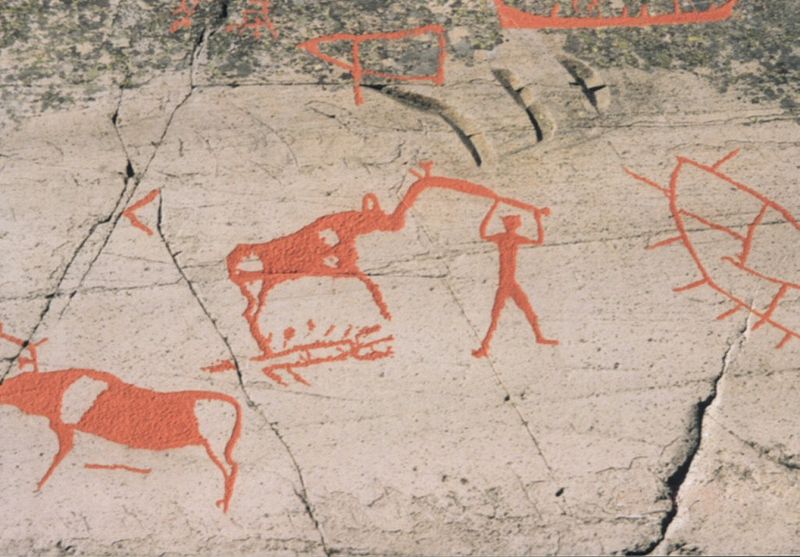 Stone Age Carving from Norway.
Stone Age Carving from Norway.
Complex Nordic Bronze age carving of obvious similar creation as the design above.
Rock carving form Norway (Over 6000 years old) Showing unique artistic elements.
Norway 1200BC
Many images on these stones dating from 6000 years ago tothe Iron age depict many traditions found in Germanic and later Viking age culture such as waging war on boats, farming/herding, fishing, ship design, beings in Germanic religion and symbols found throughout Nordic culture prehistoric to modern. When looking at these images one could understand how the Runes may have evolved out of it stylistically. The exact culture responsible is unknown in some cases but elements can be traced to later Nordic customs.
STONE CARVING PHOTO’S ARE FROM WIKIPEDIA. Copyright to respective owners.
A small gallery of images and symbols. Art of my own creation is marked.

Irminsul: Ancient German totem most likely of Yggdrasil (World tree) Symbol is associated with The Saxons and a Deity called Irmin who is most likely Odin under one of his alias/regional names. (Photo by Varus111) Reconstructed Irminsul in Hildesheim Germany.

Thor-Thunor: Nordic Thunder God. Viking age bronze statue.
Helmet replica from the Sutton-Hoo find. Adorned with glorious plates referencing Nordic customs, legendary figures and amazing detailed metal work. (Not my photo)
Stone carving designs from Gotland Sweden. Copyright Call Of Steel 2012.
Gotland Sweden Stone Carving: Pre Viking. Copyright COS 2012.
Viking age stone carving from Gotland Sweden:Viking age. Copyright COS 2012.
Anglo Saxon decoration. Copyright COS 2012.
…………………………………..
In summary I hope this post gave at least some idea of Norse culture. It is near and dear to my heart as I descend from these mighty folk and try as an artist to keep some element of the old ways alive and well into the future.
Thanks for reading and stay tuned for more Blacksmith and historical posts.
Hroðberht-
The difference between Winterfylleth and Samhain (Sowen)
I thought it might be interesting to post in Regard to my last post which wished everyone a happy Samhain (Sowen) and Winterfylleth.
Samhain is a Celtic festival of winter or the beginning of winter on Oktober 31 (Normally) or between the Autumnal Equinox and Winter solstice. It is a day of ancestral remembrance and honoring of the dead marked by many traditions still performed by modern people. I have. Samhain means generally November and is a festival when the door between all the worlds open and the dead may return and wander among the living. The tradition of mask wearing may begin with trying blend in with the wandering spirits.

Winterfylleth: (Winter Full) is a Germanic festival day marking the beginning of winter. The name is derived from Anglo-Saxon. The month of October is called Winterfylleth. Many of the Winterfylleth traditions are now held within Halloween as a whole as both holidays are now intertwined culturally in modern times. I have celebrated it and Samhain for many years.
“Antiqui Anglorum populi annum totum in duo tempora, hiemis et aestatis dispertiebant, sex menses aestati tribuendo, sex reliquos hiemi; unde et mensem, quo hiemalia tempora incipiebant, Ƿintirfylliþ appellabant, composito nomine ab hieme et plenilunio, quia videlicet a plenilunio ejusdem mensis hiems sortiretur initium Ƿintirfylliþ potest dici compositio novo nomine hiemi plenium”
“The old English people split the year into two seasons, summer and winter, placing six months — during which the days are longer than the nights — in summer, and the other six in winter. They called the month when the winter season began Ƿintirfylliþ, a word composed of “winter” and “full moon”, because winter began on the first full moon of that month”
Bede-
Thanks for Reading.
H-
New Daggers Knives and Jewelry Gallery.
Many new works of Iron! Some of which are forged from a special source of Iron that has been struck by lightning!
Everything above is basically Iron works.
New HC knives will be posted soon!
Thanks for looking!
Knives And Jewelry Gallery 2012
Jewelry and Athame in 2012.
HC Rebar 40 Grade. Polish/natural finish.

Mjollnir Amulet. Upcycled steel with SP ring.
HC Railroad Spike Knife
Norse Serpent
Forged Mjollnir With Loop.
Coin Silver Mjollnir with Solid 925 Ring.
These are just a few of the items being produced in my fire between late 2011-2012. Hope you enjoyed the gallry.
H-
Norse West Shop. Tons of New items!

